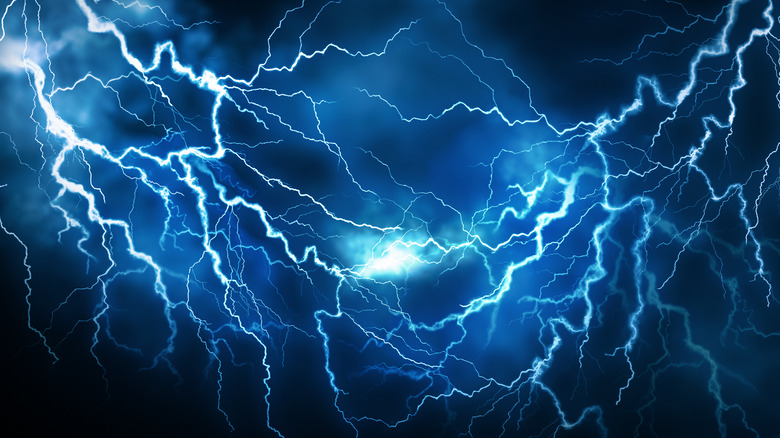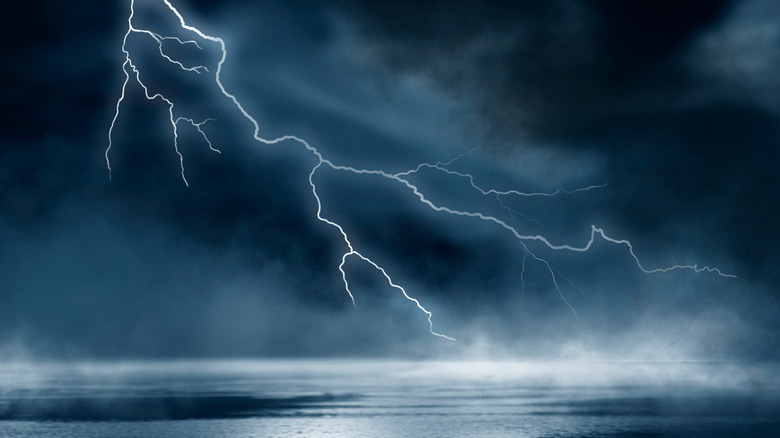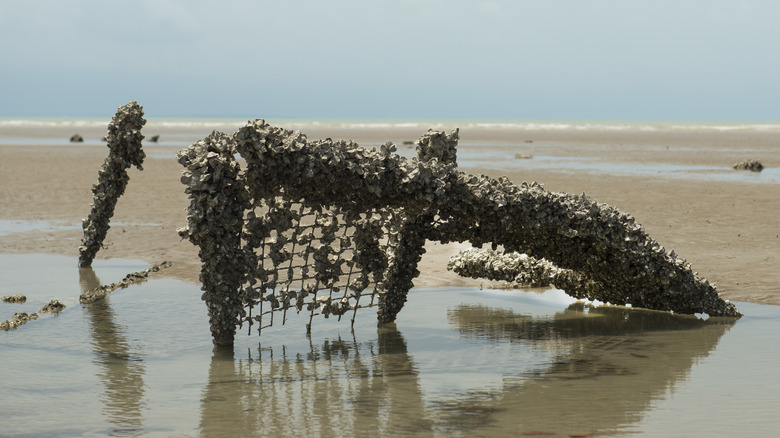What Actually Happens When Lightning Strikes Sand?
Lightning is one of the world's greatest wonders and among its biggest threats. According to NASA, lightning is produced when cold and warm air meet in the atmosphere. In the process, cold air ice crystals bump up against warm air water droplets. When that happens, static electricity is produced, giving lightning its "zap!" Though rare, when lightning strikes humans it can be fatal. On average in the U.S., 43 people are killed by lightning each year, according to National Weather Service (NWS) data. Meanwhile, out of 10,000 lightning strikes in North America, somewhere between two and five of them will start forest fires, in turn causing 90% of the forest fires in Alaska and northern Canada, per 2022 reporting from The Guardian.
Lightning is not just destructive, though. For millennia, lightning's spectacle has worked its way into human mythology and storytelling. In the rare occurrence that especially hot lightning strikes just the right kind of sand (containing high levels of quartz or silica), something truly magical happens, as Discovery explains: a rare and highly-prized object is created for geologists and intrepid (and lucky) rock hunters to discover, according to the National Park Service.
Lightning is hotter than the sun
As the National Weather Service goes on to note, no heat is created when electrical charges move around, as is the case with lightning. For this reason, lightning itself has no real temperature of its own. Due to resistance to those electrical charges, though, the air around lightning can get quite hot — as much as 50,000 degrees Fahrenheit, or five times hotter than the surface of the sun. Due to this extreme heat, when lightning hits a tree, for example, the tree itself all but explodes. It's also plain to see why lightning is so dangerous in the rare event it hits a human.
In addition to lightning of a certain temperature, what's also required for the special reaction to happen when lightning hits sand is for the sand itself to be a specific consistency. Though estimates vary, there are seven quintillion, five hundred quadrillion grains of sand on planet Earth, per NPR. According to Live Science, quartz made from silicon dioxide is the most common ingredient. Silicon dioxide is not all that can be found in sand, however, and when extra hot lightning hits sand in just the right conditions, a very rare reaction takes place, as the National Park Service explains.
When lightning hits sand, so-called 'petrified lightning' is formed
As Treehugger notes, so-called "petrified sand" otherwise known as a fulgurite (pictured) can happen whenever lightning hits soil, sand, or rock — fulgur being the Latin word for lightning, according to the National Park Service. The best conditions for a fulgurite to result is when the sand is high in silica, dry at the time the lightning strikes and otherwise free from silt and clay (via the Utah Geological Survey). This special mixture of heat and sand consistency creates a glassy tube-like object, as the quartz in the sand fuses together in the extreme heat — in other words, the sand itself has become glass.
The shape of the fulgurite can sometimes follow the contours of the lightning itself as it hits the ground. Instead of a tube, fulgurites are sometimes more like shards or a crusty material. Though they can vary widely in size, fulgurites have been found all over the planet. Since lightning rarely strikes sand, and since specific conditions are required, fulgurites aren't always created, and since they're fragile, even when they appear, they may not last long. For this reason, examples of the phenomenon are rare and quite collectible, though not worth much money. The largest fulgurite ever found split three ways — the largest branch of which was 16 feet, reports Treehugger.


